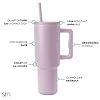4mm Super Tiny Tragus Hoop Earrings, 20g Gold Cartilage Earring, Helix Hoops, Tragus Piercing Jewelry, Upper Ear Cartialge Piercing Ear Rings, 14K Gold Filled 4 mm 20 Gauge
$15.98 (as of May 2, 2024 22:27 GMT +00:00 - More infoProduct prices and availability are accurate as of the date/time indicated and are subject to change. Any price and availability information displayed on [relevant Amazon Site(s), as applicable] at the time of purchase will apply to the purchase of this product.)Triple Solitaire Diamond Hand Chain, Ring Bracelets for Hand, Gold Slave Bracelets for women (Gold, gold-plated-base)
$26.90 (as of May 2, 2024 18:46 GMT +00:00 - More infoProduct prices and availability are accurate as of the date/time indicated and are subject to change. Any price and availability information displayed on [relevant Amazon Site(s), as applicable] at the time of purchase will apply to the purchase of this product.)The pandas library is a popular tool for data analysis in Python. One common task when working with pandas is concatenating or appending DataFrames together. However, you may encounter the error “AttributeError: ‘DataFrame’ object has no attribute ‘append'” when trying to do this.
In this comprehensive guide, we’ll explore what causes this error and the best ways to fix it. We’ll cover:
- What the “append” error means
- Common reasons for the error
- Solutions using pandas merge(), concat(), and DataFrame.combine_first()
- Appendix with example code snippets
Whether you’re new to Python and pandas or an experienced user, this guide will help you understand and resolve the confusing “DataFrame object has no attribute ‘append'” error for good. Let’s get started!
What Does “AttributeError: ‘DataFrame’ object has no attribute ‘append'” Mean?
This error occurs when you try to call the .append() method on a pandas DataFrame, but that DataFrame object does not have a .append() method available to it.
For example:
import pandas as pd
df1 = pd.DataFrame([['a', 1], ['b', 2]])
df2 = pd.DataFrame([['c', 3], ['d', 4]])
df1.append(df2)
Running this code produces the following error:
AttributeError: 'DataFrame' object has no attribute 'append'
This happens because DataFrame objects in pandas do not have a .append() method. So calling .append() on df1 fails with an AttributeError.
Why Do I Get the “AttributeError: ‘DataFrame’ object has no attribute ‘append'” Error?
There are a few common reasons why you may try to call .append() on a DataFrame and get the “no attribute” error:
1. Confusing pandas .append() with list .append()
Python’s built-in list objects have a .append() method to add elements to the end of a list. So you may be trying to append DataFrames thinking they work the same way.
But pandas DataFrames are not simple lists – they have different methods and behaviors. So the list .append() syntax does not apply.
2. Switching from other data tools like R or SQL
If you’re used to R or SQL, you may expect .append() to work similarly in pandas.
R has a pdf. append() function to add rows of data frames. SQL databases can append to tables with INSERT statements.
But the panda’s library was designed differently, so append operates differently here.
3. Reviewing outdated tutorials or documentation
Older pandas documentation and tutorials commonly used .append() to concat DataFrames. It was an “official” method in pandas before version 0.23.
However, .append() was deprecated and then removed in later pandas versions due to issues with its behavior. So any old code or blogs may now cause headaches.
4. Making assumptions without reading the documentation
As panda usage has grown, many new users try to piece together syntax based on experience with other tools or languages.
They may assume .append() should work as it does in other contexts without verifying the panda’s documentation first. This leads to frustration when their assumptions don’t align with reality!
The key is carefully and thoroughly reading the official pandas documentation for the version you are using. This will explain the available DataFrame methods and prevent incorrect assumptions.
How to Fix the “DataFrame object has no attribute ‘append'” Error
Now that we know why the error happens, let’s explore your options for actually appending or concatenating DataFrames correctly.
There are a few core pandas methods commonly used instead of the deprecated .append():
- pandas.merge()
- pandas.concat()
- DataFrame.combine_first()
Let’s look at how each method works for combining DataFrames.
Use pandas. merge()
The pandas .merge() function merges two DataFrames using one or more keys. This performs a SQL-style join of the DataFrames.
import pandas as pd
df1 = pd.DataFrame({'A': [1, 2], 'B': [3, 4]})
df2 = pd.DataFrame({'A': [2, 3], 'C': [5, 6]})
merged = pd.merge(df1, df2, on='A')
print(merged)
# Output
A B C
0 1 3 NaN
1 2 4 5.0
2 2 4 6.0
The .merge() method is ideal when you have key columns in both DataFrames allowing you to join them logically.
But for simple appending where order matters, .merge() is not the best choice.
Use pandas. concat()
The .concat() method concatenates or appends DataFrames together end to end. It is primarily used to stack data vertically.
import pandas as pd
df1 = pd.DataFrame({'A': [1, 2], 'B': [3, 4]})
df2 = pd.DataFrame({'A': [5, 6], 'B': [7, 8]})
concat = pd.concat([df1, df2])
print(concat)
# Output
A B
0 1 3
1 2 4
0 5 7
1 6 8
We pass a list of DataFrames to .concat() and it appends them one after the other. The index is sequential across the DataFrame boundaries.
This makes .concat() great for aggregating data where order matters like time series data.
Use DataFrame.combine_first()
The .combine_first() instance method selectively updates one DataFrame with matching data from another DataFrame. Any missing data is filled in from the other.
df1 = pd.DataFrame({'A': [1, 2], 'B': [3, 4]})
df2 = pd.DataFrame({'A': [2, 3], 'C': [5, 6]})
df1.combine_first(df2)
# Output
A B C
0 1 3 NaN
1 2 4 5.0
2 3 NaN 6.0
Here df1 is updated with column C from df2 where A matches. The .combine_first() method is helpful for cases where you want to replace missing data like NaN values in one DataFrame with matching data from another source.
When Should I Use Each Method?
Now that you know how to merge(), concat(), and combine_first() work, when should you use each one?
Here are some best practices on which pandas method to use for DataFrame appends and merges:
- Use .merge() when you have key columns to join. This performs an SQL-style merge operation similar to a left join.
- Use .concat() when the DataFrame order matters. It simply stacks DataFrames end-to-end maintaining the sequence.
- Use .combine_first() when you want to fill in NaN values from one DataFrame using data from another, like imputing missing observations.
- Avoid .append() entirely – it no longer exists!
Always refer to the official pandas documentation to verify the right method for your situation. And now you understand what’s happening when you get that cryptic “AttributeError: ‘DataFrame’ object has no attribute ‘append'” error, saving you headaches.
Example Code Snippets
Below we have example code for using .merge(), .concat(), and .combine_first() across some common DataFrame appending tasks:
Merge Example
import pandas as pd
df1 = pd.DataFrame({'A': ['A0', 'A1', 'A2'],
'B': ['B0', 'B1', 'B2']})
df2 = pd.DataFrame({'A': ['A0', 'A1', 'A2'],
'C': ['C0', 'C1', 'C2']})
merged = pd.merge(df1, df2)
print(merged)
# Output
A B C
0 A0 B0 C0
1 A1 B1 C1
2 A2 B2 C2
Concat Example
import pandas as pd
df1 = pd.DataFrame({'A': ['A0', 'A1', 'A2'],
'B': ['B0', 'B1', 'B2']})
df2 = pd.DataFrame({'A': ['A3', 'A4', 'A5'],
'B': ['B3', 'B4', 'B5']})
concat = pd.concat([df1, df2])
print(concat)
# Output
A B
0 A0 B0
1 A1 B1
2 A2 B2
0 A3 B3
1 A4 B4
2 A5 B5
Combine First Example
import pandas as pd
df1 = pd.DataFrame({'A': [1, 2, 3],
'B': [4, 5, 6]})
df2 = pd.DataFrame({'A': [1, 2, 4],
'C': [7, 8, 9]})
df1.combine_first(df2)
# Output
A B C
0 1 4 7.0
1 2 5 8.0
2 3 6 NaN
3 4 NaN 9.0
Key Takeaways
To recap, the main points to remember when fixing the “AttributeError: ‘DataFrame’ object has no attribute ‘append'” are:
- DataFrames in pandas do not have an .append() method. It was removed after version 0.23.
- Use .merge() to join DataFrames logically using one or more key columns.
- Use .concat() to simply append DataFrames together sequentially.
- Use .combine_first() to selectively fill missing data from one data frame using another.
- Always refer to the official panda’s documentation for available DataFrame methods.
- Avoid outdated tutorials or syntax examples that may use the deprecated .append().
With this understanding of the error and alternative methods, you can now confidently combine DataFrames in pandas. No more frustrating Attribute Errors!
Let me know if you have any other questions!

























